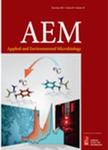版权所有:内蒙古大学图书馆 技术提供:维普资讯• 智图
内蒙古自治区呼和浩特市赛罕区大学西街235号 邮编: 010021

作者机构:Yale Univ Dept Biol New Haven CT 06520 USA
出 版 物:《APPLIED AND ENVIRONMENTAL MICROBIOLOGY》 (Appl. Environ. Microbiol.)
年 卷 期:1999年第65卷第4期
页 面:1675-1680页
核心收录:
学科分类:0710[理学-生物学] 1007[医学-药学(可授医学、理学学位)] 100705[医学-微生物与生化药学] 07[理学] 0836[工学-生物工程] 071005[理学-微生物学] 10[医学]
主 题:不动杆菌属/遗传学 不动杆菌属/代谢 氨基酸序列 碱基序列 邻苯二酚2 3-双加氧酶 染色体 细菌 双加氧酶类 卡那霉素抗药性/遗传学 分子序列数据 诱变 插入 氧合酶类/遗传学 质粒/遗传学 聚合酶链反应/方法 假单胞菌 恶臭/遗传学 序列分析 DNA 转化 细菌
摘 要:Localized sets of random point mutations generated by PCR amplification can be transferred efficiently to the chromosome of Acinetobacter ADP1 (also known as strain BD413) by natural transformation. The technique does not require cloning of PCR fragments in plasmids: PCR-amplified DNA fragments are internalized by cells and directly incorporated into their genomes by homologous recombination. Previously such procedures for random mutagenesis could be applied only to Acinetobacter genes affording the selection of mutant phenotypes, Here we describe the construction of a vector and recipient that allow for mutagenesis, recovery, and expression of heterologous genes that may lack a positive selection. The plasmid carries an Acinetobacter chromosomal segment interrupted by a multiple cloning site next to a kanamycin resistance marker. The insertion of heterologous DNA into the multiple cloning site prepares the insert as a target for PCR mutagenesis, PCR amplifies the kanamycin resistance marker and a flanking region of Acinetobacter DNA along with the insert of heterologous DNA. Nucleotide sequence identity between the flanking regions and corresponding chromosomal segments in an engineered Acinetobacter recipient allows homologous recombination of the PCR-amplified DNA fragments into a specific chromosomal docking site from which they can be expressed. The recipient strain contains only a portion of the kanamycin resistance gene, so donor DNA containing both this gene and the mutagenized insert can be selected by demanding growth of recombinants in the presence of kanamycin. The effectiveness of the technique was demonstrated with the relatively GC-rich Pseudomonas putida xylE gene. After only one round of PCR amplification (35 cycles), donor DNA produced transformants of which up to 30% carried a defective xylE gene after growth at 37 degrees C. Of recombinant clones that failed to express xylE at 37 degrees C, about 10% expressed the gene when grown at 22 degrees C,